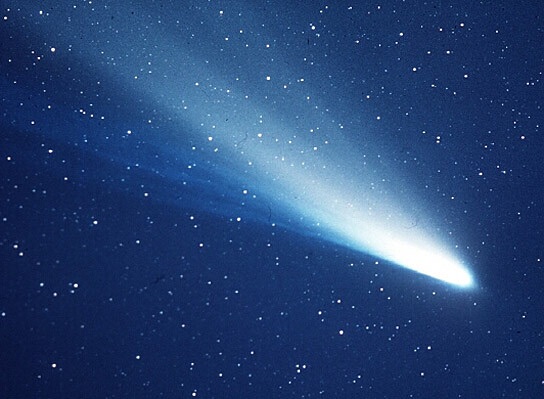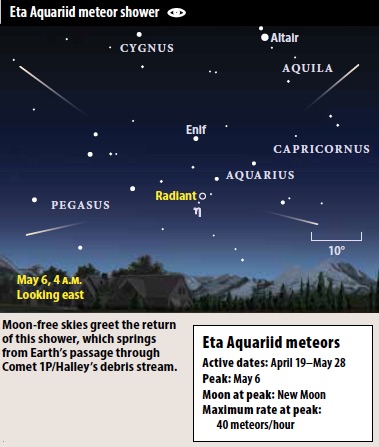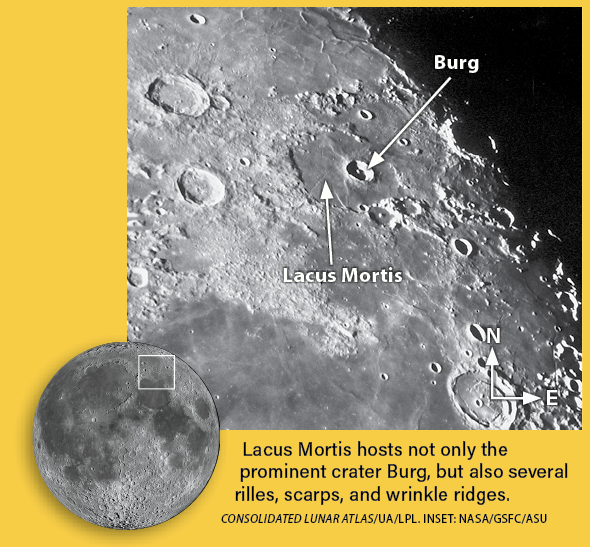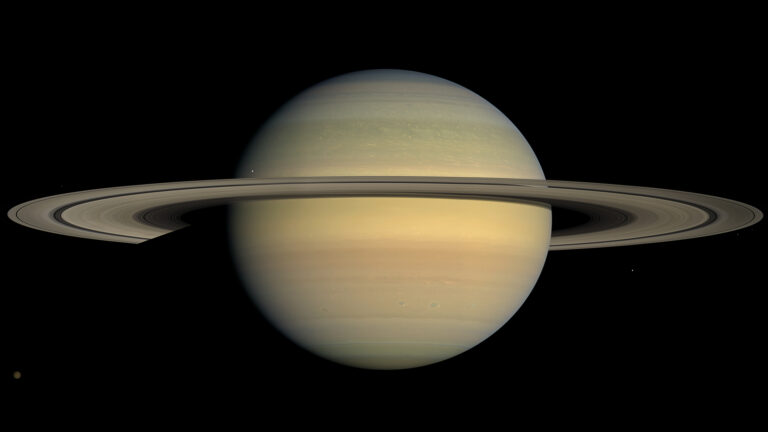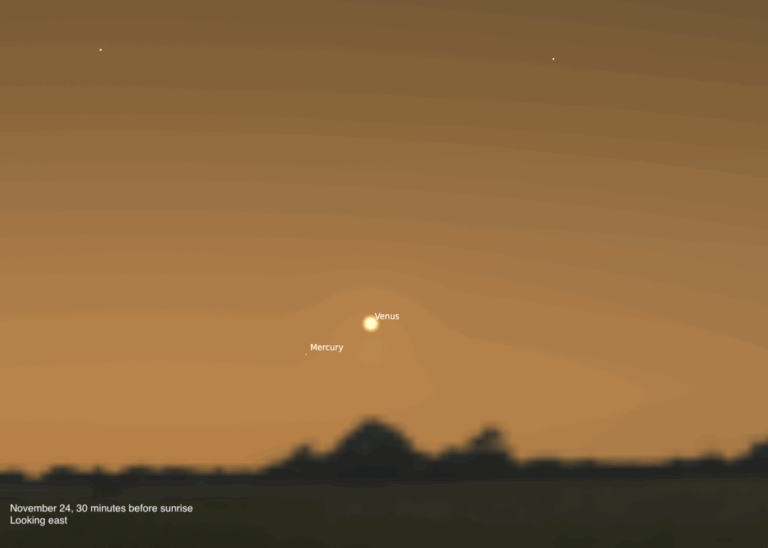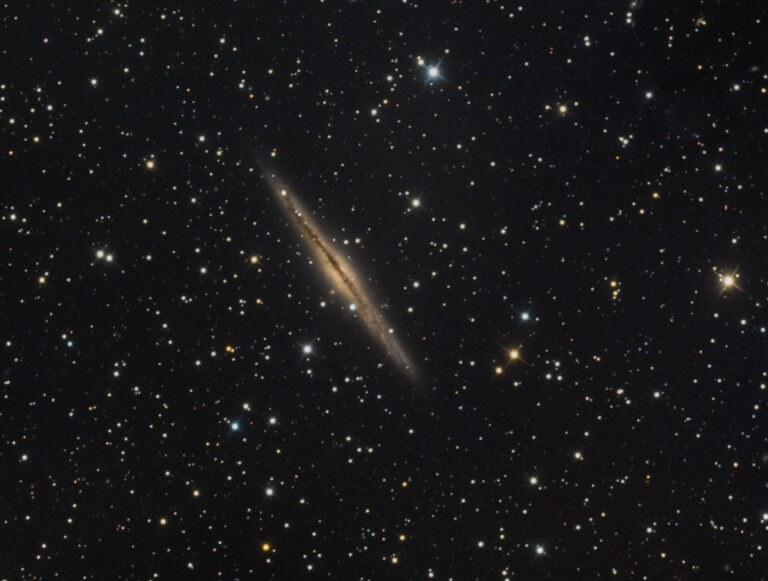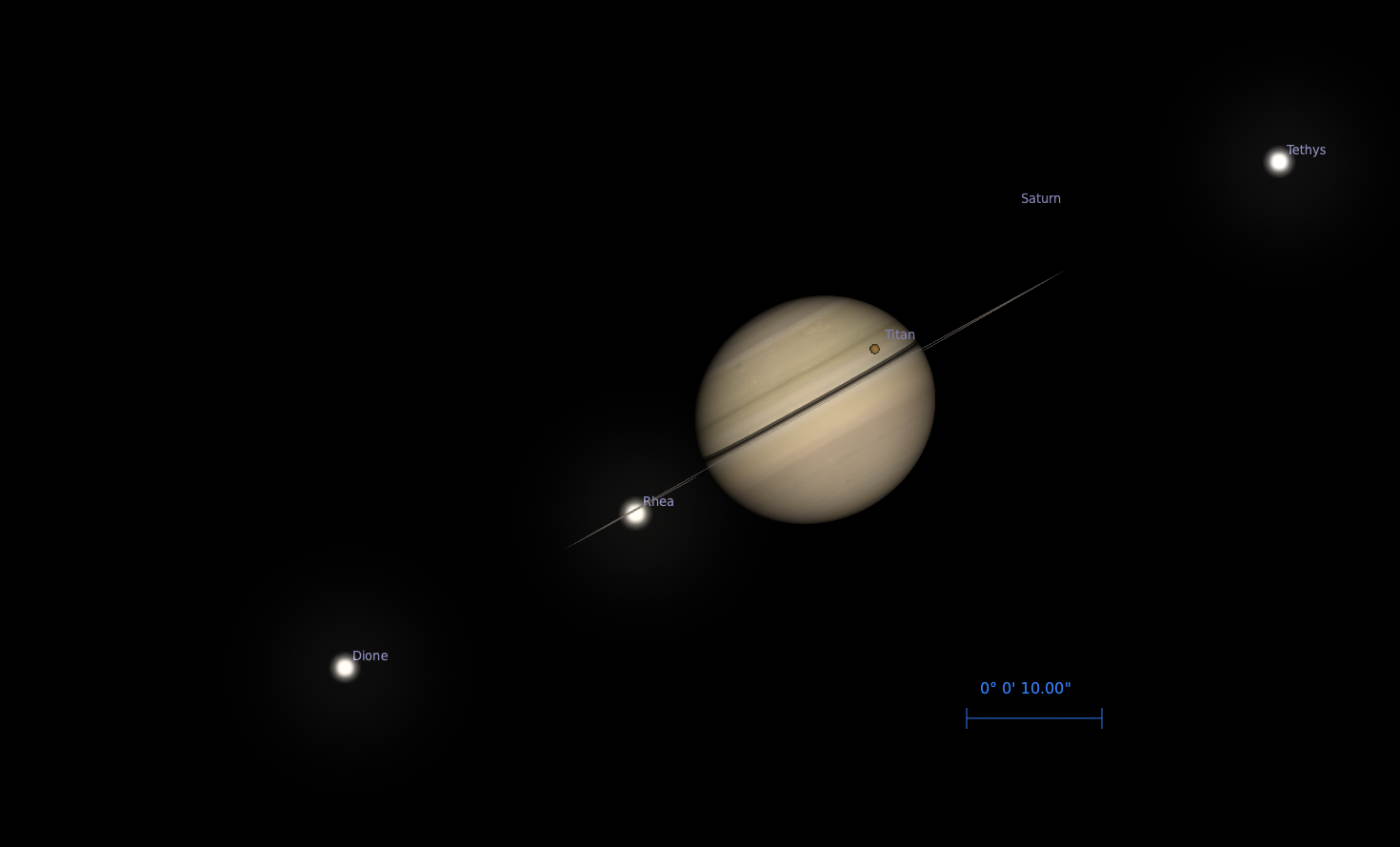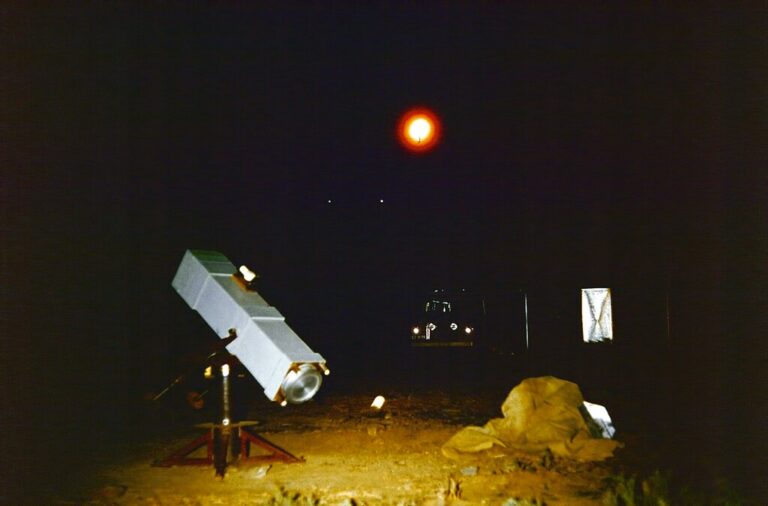Key Takeaways:
With New Moon arriving May 4, conditions couldn’t be better for the Eta Aquariid meteor shower, which peaks on the morning of May 6. Thankfully, the dwindling Moon casts less and less light into the morning sky as this week progresses, so observing conditions will continue to improve by the shower’s peak next Monday, leading to a particularly great display.
The meteors derive from dust ejected by Comet 1P/Halley during its many trips around the Sun. Although this famous comet currently lies about as far from the Sun as it can, debris from its many encounters with the Sun fills in its orbital path. When Earth plows through this stream of detritus, our planet’s atmosphere incinerates the tiny dust particles, creating streaks of light we called meteors, or “shooting stars.”
This week, the best views will come in the hour or two before morning twilight commences, when you might see 5 to 10 meteors per hour from a dark site. However, during the shower’s peak early on May 6, Northern Hemisphere observers could see up to 20 meteors per hour under dark skies.
Viewers in the Southern Hemisphere, where the shower’s radiant passes nearly overhead, should see twice as many. And with the Moon having reached its New phase the night before, we couldn’t ask for better conditions.
For more quick and easy observing tips, check out The sky this week for April 26 to May 5.

